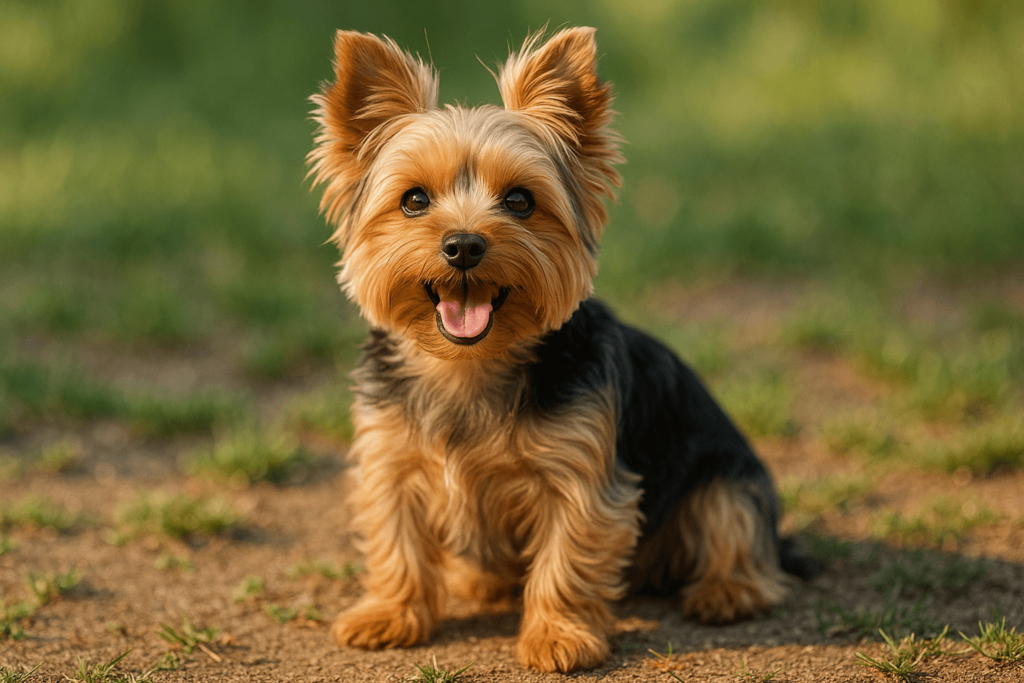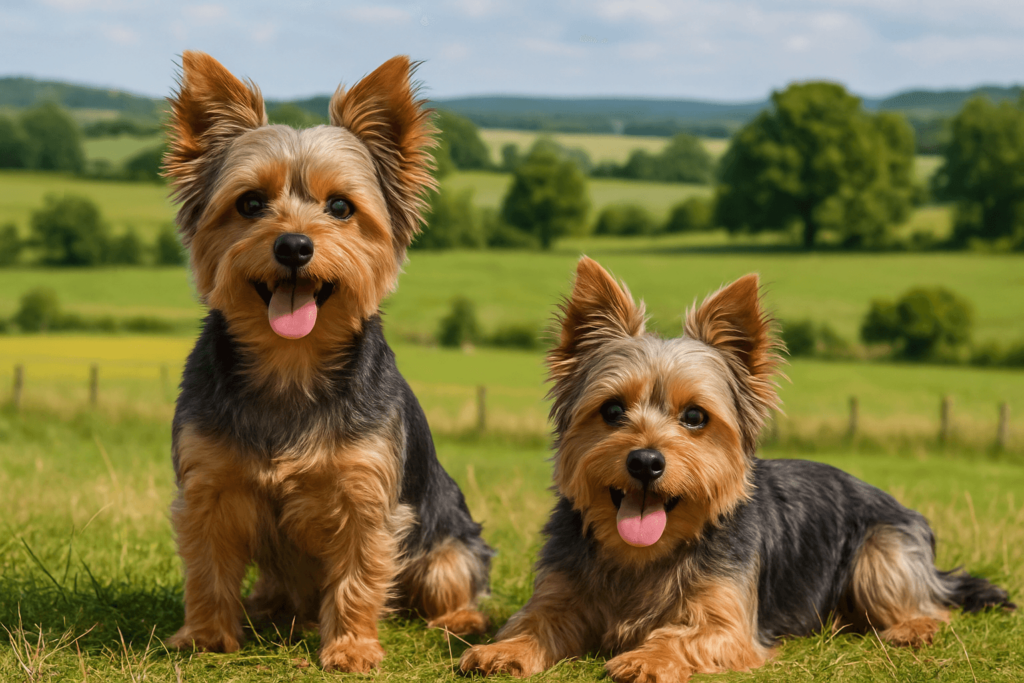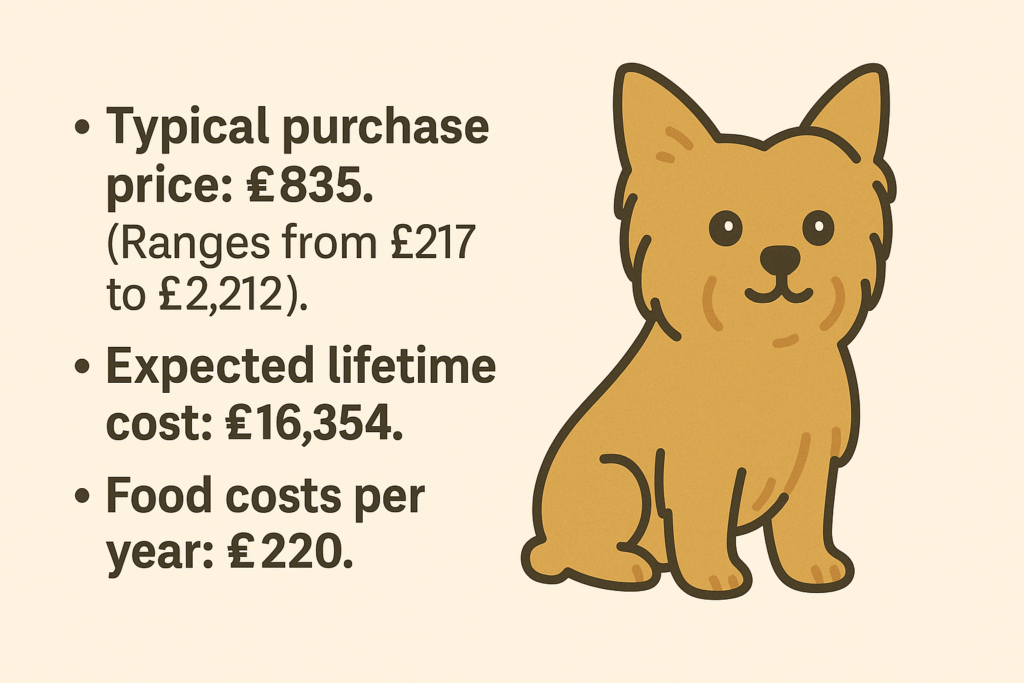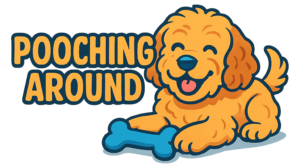Yorkshire Terrier Dog Breed Name Background and Alternatives
The Yorkshire Terrier is also known as Yorkie in the UK. Yorkie’ became a popular diminutive in the Victorian era. The breed was developed in Yorkshire during the Industrial Revolution by Scottish weavers who had migrated to the mills of Northern England..
Whereas in the United States, the Yorkshire Terrier is also known as Yorkie. The nickname ‘Yorkie’ became ubiquitous in the US during the breed’s popularity surge in the 1960s and 70s..

Physical attributes
- Height: ranges from 20cm / 8 inches up to 20cm / 8 inches.
- Weight: ranges from 1kg / 3lbs up to 3kg / 7lbs.
- Typical fur colours: brown & tan.
- Eye colour: brown.
- Size category: small.

Health attributes
- Common health problems: patellar luxation, portosystemic shunt and tracheal collapse.
- Usual longevity: 12 to 15 years.
- Hypoallergenic? Yes.
Yorkshire Terrier breed fulfilment and exercise needs
Yorkshire Terriers may be tiny, but these pint-sized pups pack a whole lot of energy into their compact frames. Despite their reputation as lap dogs, Yorkies need a surprising amount of daily exercise – typically between 45 and 90 minutes – to stay happy and healthy. It’s not just about physical activity though; these clever little dogs need mental stimulation too.
Tapping Into Their Ratting Heritage
Originally bred as ratters in Yorkshire’s textile mills during the Victorian era, these feisty terriers haven’t lost their hunting instincts. That’s why they’ll often zoom after small moving objects with such determination. Understanding this heritage helps explain why Yorkies need specific types of enrichment to feel fulfilled.
Perfect Activities for Your Yorkie
Small prey toy games are a fantastic way to let these former ratters express their natural instincts. Squeaky toys and moving toys that mimic prey movement can keep them entertained for hours. Mini agility courses, whether store-bought or homemade, provide both physical exercise and mental challenges – perfect for these agile little athletes.
Mental Stimulation Matters
Puzzle toys are another excellent way to keep a Yorkshire Terrier’s mind sharp. These clever canines love figuring out how to get treats from interactive toys. Indoor tracking games, where they follow a scent trail to find hidden treats or toys, tap into their hunting heritage while providing excellent mental exercise – especially useful on rainy days when outdoor activities aren’t possible.
While they’re small enough to live comfortably in apartments, don’t let their size fool you. These spirited terriers need regular active exercise to prevent boredom and potential behavioral issues. A combination of physical activity and mental enrichment will help ensure your Yorkie lives their best, most fulfilled life.
Yorkshire Terrier breed behavioural traits
- Character traits of a Yorkshire Terrier: The Yorkshire Terrier usually exhibits character traits that include bold, confident, independent and intelligent.
- Yorkshire Terrier obey scale: In percentage terms, the Yorkshire Terrier typically scores around 70% on the obey scale.
- Trick repetitions required: In terms of how many times the Yorkshire Terrier needs to learn new tricks, expect between 16 and 25 repetitions before they pick things up.
- Intelligence category: The Yorkshire Terrier sites in the above average category when it comes to intelligence.
- Suitability for children: If you have kids, it’s worth knowing that the Yorkshire Terrier is not very suitable for children.

Yorkshire Terrier: A Fascinating Background and Rich History
Despite their tiny size and glamorous appearance today, Yorkshire Terriers come from humble beginnings as working-class dogs in northern England. These pint-sized pups, classified as toy dogs, have a remarkable history that dates back to the Victorian era during the Industrial Revolution.
In the bustling textile mills of Yorkshire, England, during the 1800s, these feisty little dogs earned their keep by hunting rats that plagued the factories. Scottish weavers who migrated to England brought with them several small terrier breeds, which were later crossed to create what we now know as the Yorkshire Terrier. Despite their diminutive size, these dogs proved themselves to be exceptional ratters with above-average working capabilities.
The transformation from working-class hero to lap dog luxury didn’t happen overnight. The breed’s gorgeous, silky coat actually served a practical purpose in their working days – it provided protection from the rats they hunted while remaining lightweight enough to allow quick movement. As time went on, the upper class took notice of these charming little dogs, and they gradually moved from the mills into the parlors of Victorian society.
What’s particularly interesting about Yorkies is how they’ve maintained their terrier spirit despite their toy dog classification. They might be small enough to fit in a purse, but they still possess the intelligence and determination that made them such effective working dogs. Their above-average problem-solving skills and fearless nature continue to reflect their ratting heritage, even though most modern Yorkshire Terriers are more likely to chase toys than rodents.
Today’s Yorkshire Terrier may look quite different from its working-class ancestors, but their brave hearts and clever minds remain unchanged. These beloved companions have successfully made the journey from industrial ratters to cherished family pets, while never losing the spark that made them such valuable working dogs in the first place.
Typical costs for buying and owning a Yorkshire Terrier
- Typical purchase price: £835. (Ranges from £217 to £2,212).
- Expected lifetime cost: £16,354.
- Food costs per year: £220.

